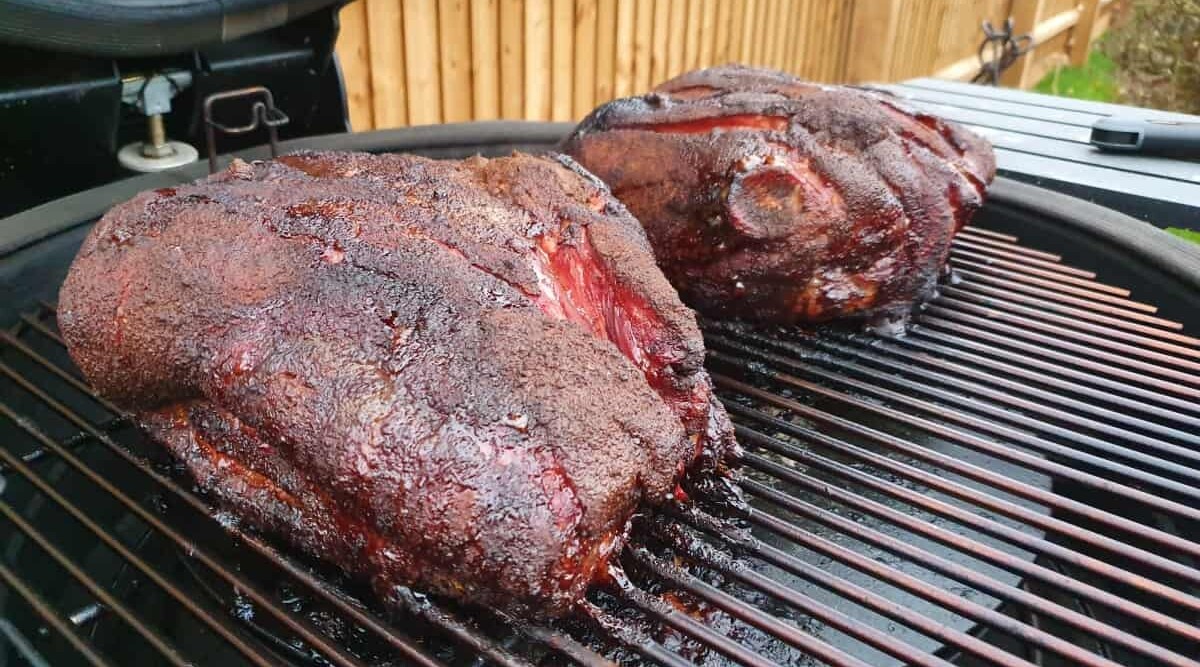
It’s widely agreed that the best woods for smoking pulled pork are hickory, oak, apple, cherry, and pecan. These woods are considered the best due to their flavor profiles and how they complement the meat. But there are other options.
My favorite woods to use with pulled pork is a 50/50 mix of oak and apple, or a 50/50 mix of oak and cherry. I have experimented with a large number of different woods over 20 years, and these combinations give the best results for my preferred tastes.
Making your own pulled pork from a perfectly smoked shoulder is one of the great joys of the craft. You can do almost anything with it — stuff it in sandwiches, tacos, and fajitas, pile it on top of poutine, or use it as a condiment for hot dogs and burgers. And, naturally, you can just enjoy it the way it is! Sometimes, I won’t even bother with a fork.
Anytime we smoke meat, though, we have to think about what wood to choose, as it can dramatically change the finished product’s flavor.
To relieve some of your stress, I’ve compiled a list of the best and most popular woods for smoking pulled pork. I’ve also got some alternatives for mixing things up, and we check in with some of the biggest names and experts in barbecue to see what’s in their smokers.
Jump to:
- 1 Quick Reference Table: Best Woods for Pulled Pork and Their Flavor Profiles
- 2 Which Woods do I use to Smoke Pulled Pork?
- 3 What are the Best Mild and Sweet Woods for Pulled Pork?
- 4 The Best Medium to Strong Tasting Woods for Pulled Pork
- 5 Truth Be Told, Many Other Woods Work Too!
- 6 Mix Different Woods to Get the Best of Both Worlds
- 7 What the Experts Use
- 8 Final Thoughts
Quick Reference Table: Best Woods for Pulled Pork and Their Flavor Profiles
This table provides a quick overview of each wood’s distinct flavor characteristics when used for smoking pulled pork.
| Wood Type | Flavor Profile |
|---|---|
| Apple | Mild, sweet, fruity |
| Maple | Mild, slightly sweet, smooth |
| Cherry | Mild, sweet, fruity with color enhancement |
| Peach | Mild, sweet, slightly tangy |
| Hickory | Strong, traditional smoky |
| Oak | Medium, balanced smoky |
| Pecan | Rich, nutty, moderately strong |
| Mesquite | Strong, earthy, distinct sharpness |
Let’s now take a look at each in more depth, starting with the more popular milder woods before moving onto the stronger wood smokes.
Which Woods do I use to Smoke Pulled Pork?
My favorite woods to use with pulled pork is a 50/50 mix of oak and apple, or a 50/50 mix of oak and cherry. I prefer a slightly stronger smoky taste on my pork than the fruit woods alone can provide, but like the complexity offered by mixing it with a fruit wood. And I’m an absolute sucker for the red hue that cherry wood smoke gives to all meats, so I use this a lot. We eat with our eyes, and I adore the color cherry wood adds to things.
The reason I tend to use oak so much is purely because I have an abundant cheap supply of it. I still like other woods, but choose to go with what’s cheaply and readily available to me. Plus, it’s a great match for pork anyway.
What are the Best Mild and Sweet Woods for Pulled Pork?
The best mild woods for smoking pork are apple, maple, cherry, and peach, though peach is typically hard to come by.
Pork on its own has a mild flavor so using woods that put out a lot of heavy smoke may overpower the meat, and that’s not necessarily what we want.
For many, fruit woods are the way to go. With their more subtle smoke flavor and hints of sweetness, they not only allow the pork flavor through, but they also complement many sweet rubs and sauces commonly used for pulled pork.
Here are four go-to fruit woods for smoking pulled pork:
Apple
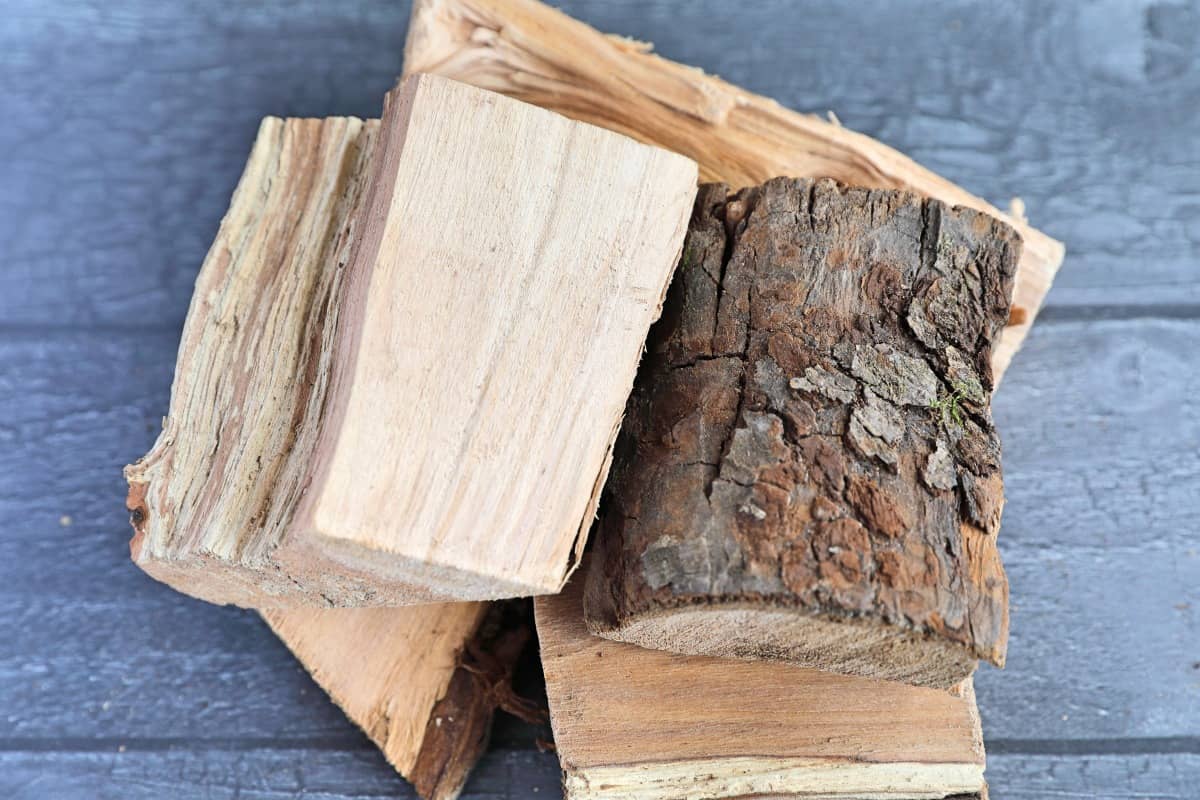
This common wood is a favorite right across North America for the sweet and fruity flavor it adds and for delivering just a hint of smokiness.
Apple wood is popular in North America for its sweet, fruity flavor and for delivering just a hint of smokiness that is ideal for slow-cooked dishes like pulled pork.
If you’re not sure if your crowd is into smoke, default to apple for pulled pork. Plus, what could be more classic than apple and pork?
Maple
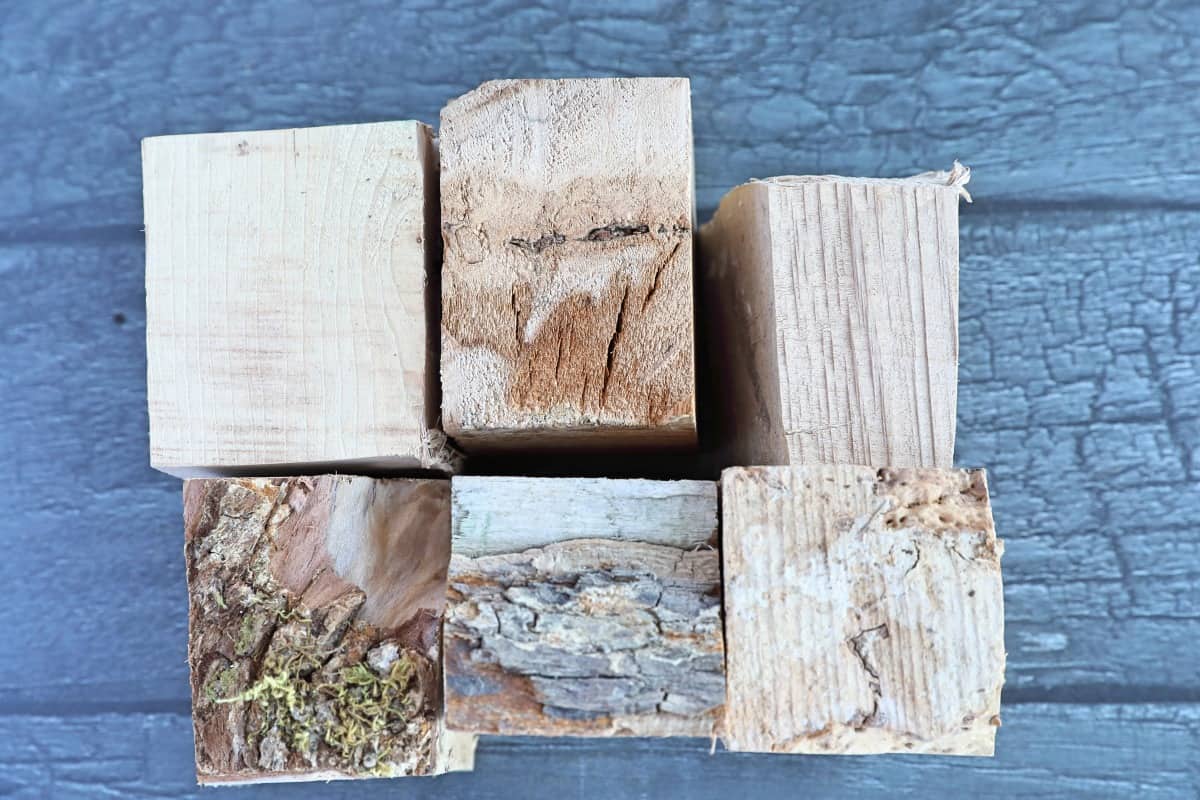
While maple wood lacks the fruitiness of the other woods in this section, it gives pulled pork a subtly sweet and mild smoke flavor, often favored by barbecue enthusiasts.
Maple’s main advantage is enhancing pork’s flavor without dominating it, making it a top choice for those who prefer a nuanced smokiness. Its light, balanced smoke complements pork’s natural flavors.
Smoking with maple can produce a visually appealing golden-brown crust, enhancing both taste and presentation. And it particularly works great with brown sugar-based rubs.
It’s a recognizable smoke flavor to most people too due to its frequent use with bacon, so it’s tough to overdo it with maple, making it popular with novice smokers.
Cherry
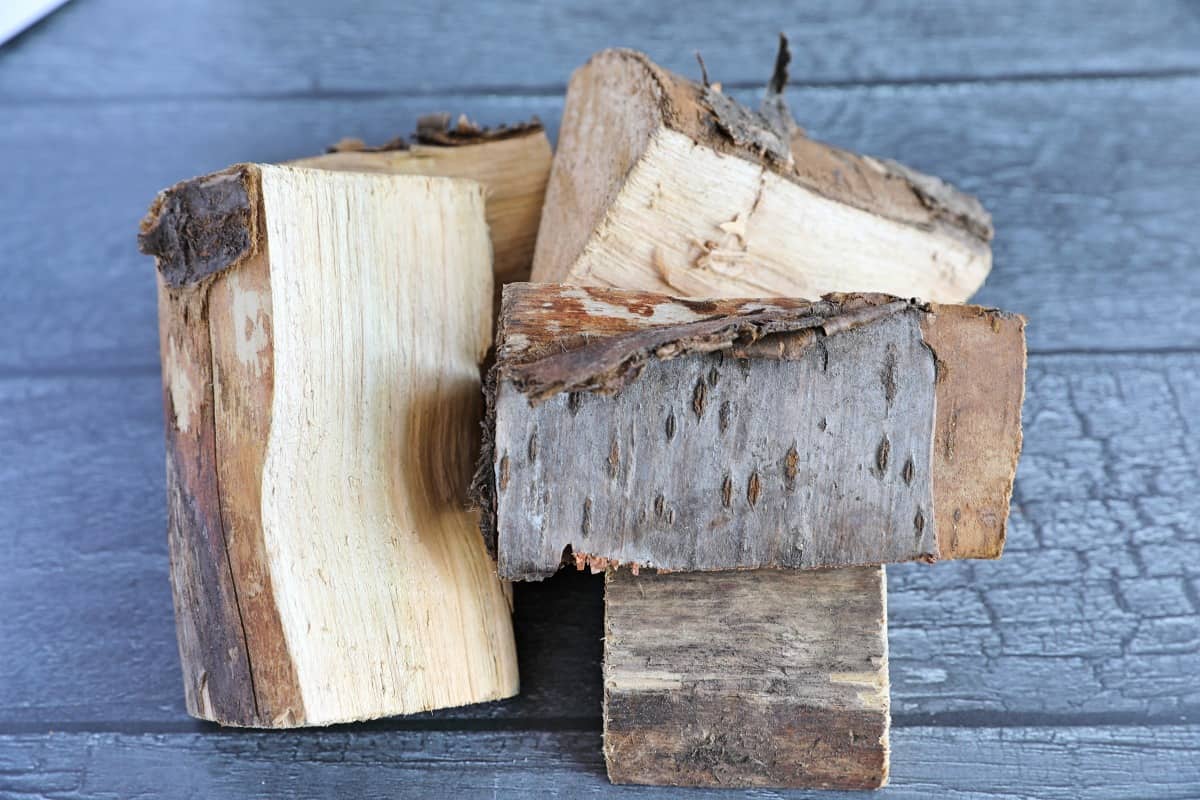
The prince of fruit woods, cherry brings home a trifecta of goodness: sweetness, mild smoke, and adds a lovely red color to the surface of meats smoked with it. They say we eat with our eyes — try smoking with cherry, and you’ll see how true that is.
Cherry wood’s sweet, mild but appealing smoke flavor significantly enhances the taste of pulled pork. Its subtle, fruity, and mildly sweet smoke complements the meat’s rich taste without overpowering it.
Peach
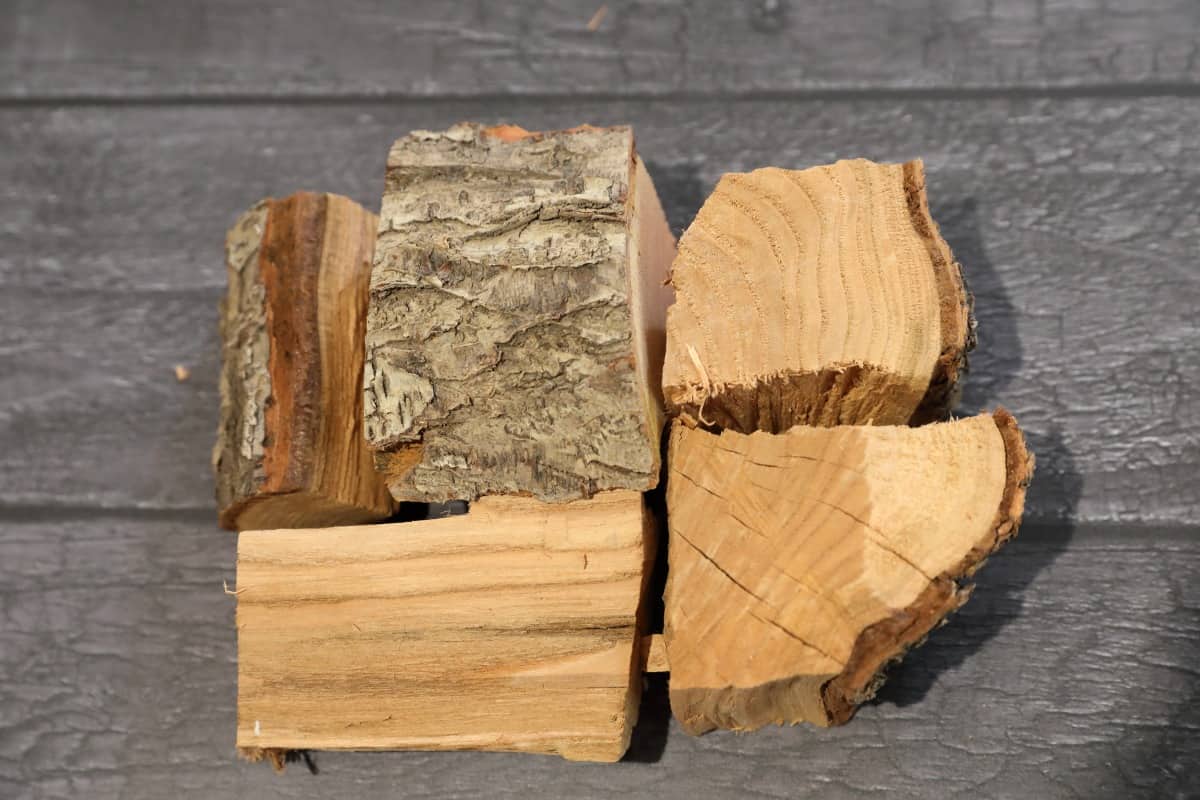
Peach wood, a Southern BBQ staple, is known for its gentle, sweet smoke profile that complements and enhances pulled pork’s savory profile without overwhelming it, leaving the pork flavor intact.
Ideal for those who appreciate pork’s subtle taste, peach wood is a top choice among barbecue enthusiasts and chefs for adding a gentle, smoky touch. Its blend of sweet and fruity notes elevates pork’s natural flavors.
Peach is a terrific choice for those who want to taste pork or love fruit-based sauces and injections.
The Best Medium to Strong Tasting Woods for Pulled Pork
The best stronger smoke flavors for pulled pork are hickory, oak, pecan, and mesquite.
Some among us, myself included, have a hankering for medium to intense smoke flavor in their food. If you’re with us, give these varieties a try.
Hickory
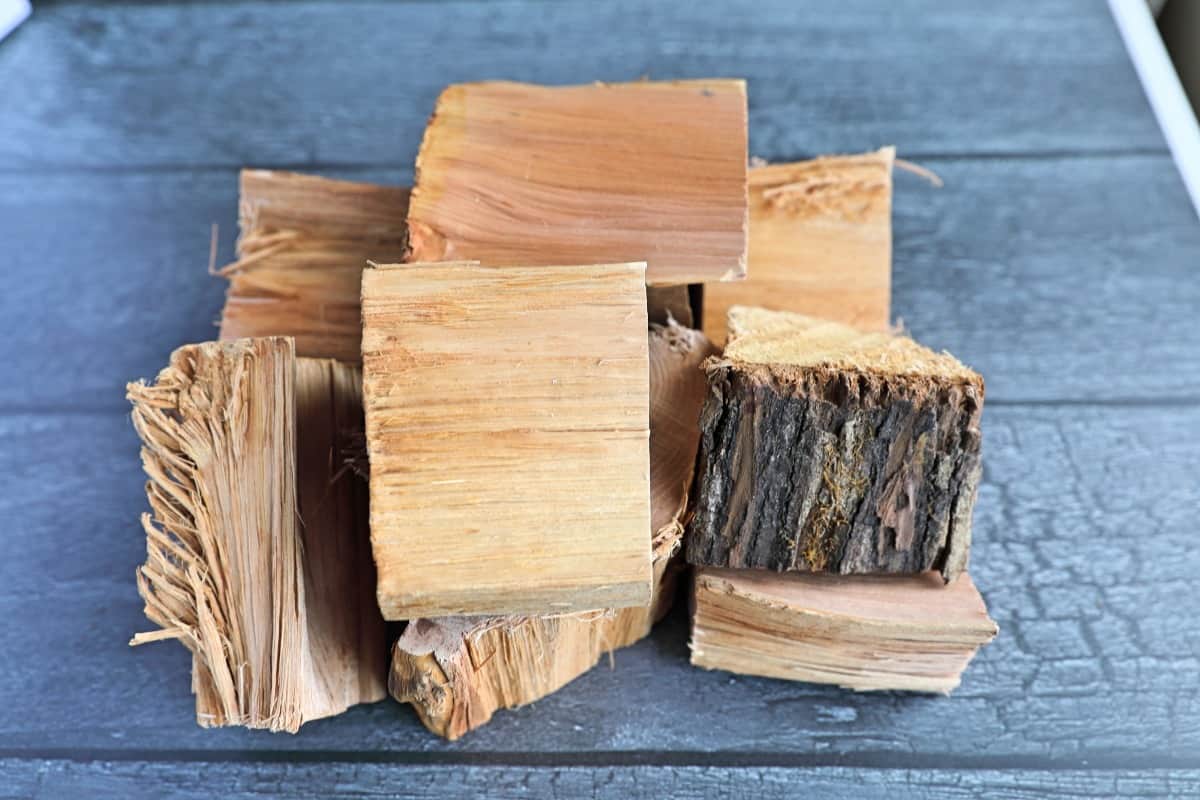
Hickory is a favorite in traditional Southern barbecue and is easily one of the most popular smoking woods overall. It is what you might call medium-high on the smoke scale with some sweetness, though, and it’s a match for almost any barbecue sauce you care to name.
Hickory is also known for its strong, bacon-like flavor. This robust taste complements pulled pork, creating a layered flavor experience with the smoke, pork, spices, and sauce.
Hickory also creates a dark mahogany bark on smoked meat, adding visual appeal. It pairs well with various barbecue sauces, particularly fruity ones.
Oak
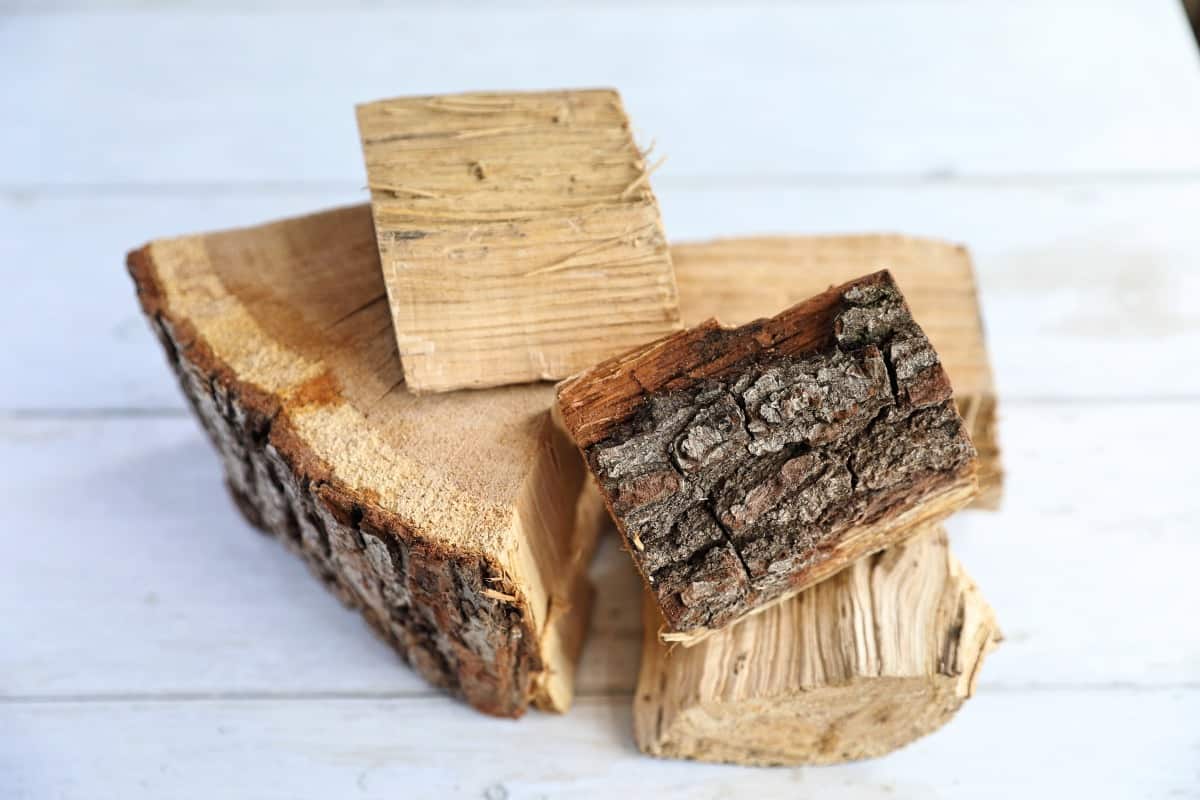
Though some consider oak generic in terms of flavor, it’s a crowd-pleaser that provides a lot of smoke taste with a medium to strong, assertive flavor that pairs well with pulled pork, enhancing the meat’s richness without overpowering its natural flavors.
Many pitmasters favor oak’s versatility. It’s often mixed with milder woods for diverse flavor profiles. It imparts a smoky flavor that complements the pork but doesn’t overshadow sauces or rubs on it.
Unlike fruitwood, oak lacks fruity undertones but can be blended with them for complex flavors.
Oak’s appeal also lies in its widespread availability. However, pitmasters should use it cautiously to avoid overpowering the pork’s natural flavors.
Pecan
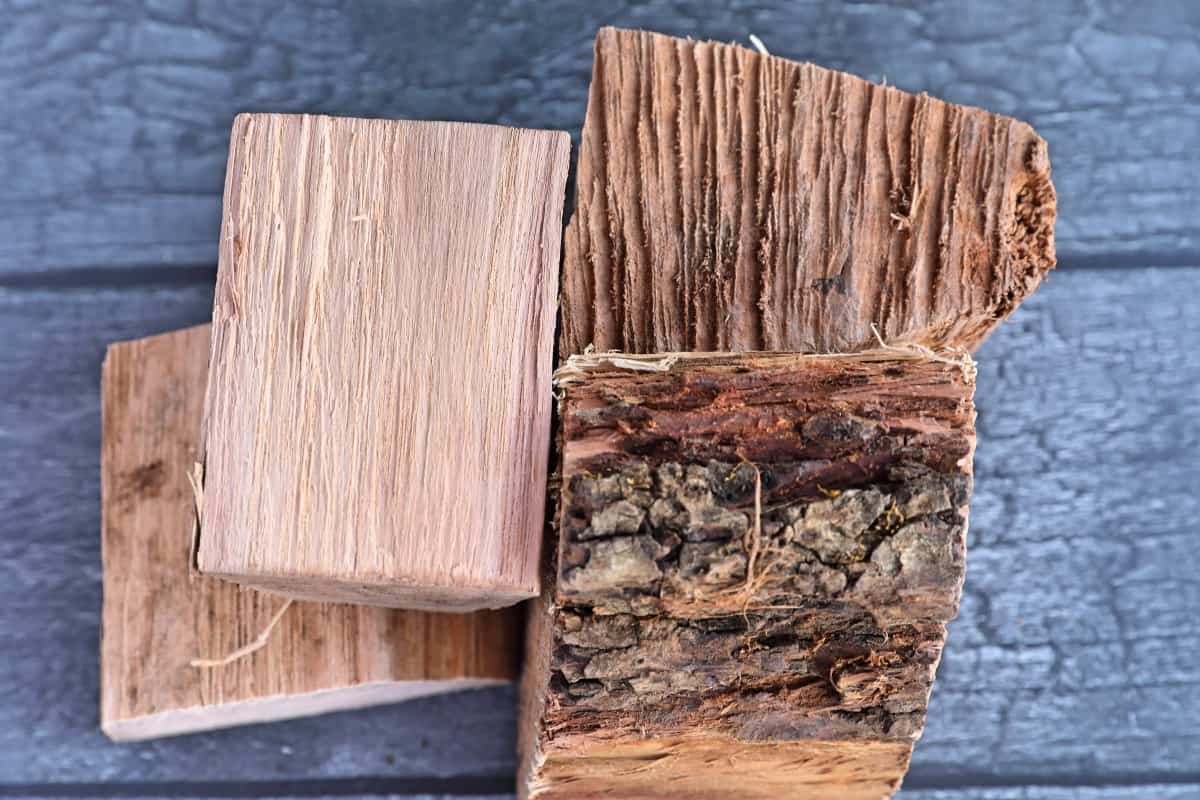
Pecan wood imparts a rich, sweet, slightly nutty flavor to smoked pulled pork. Its bold, medium-heavy smoke is stronger than fruitwoods but less intense than hickory or mesquite, offering a good balance of smoky and meaty flavors.
Some people find pecan wood smoke too sweet, so be sure your sauce or rub balances it out.
Pecan wood is suitable for those wanting a noticeable but not overpowering smoke flavor.
Mesquite
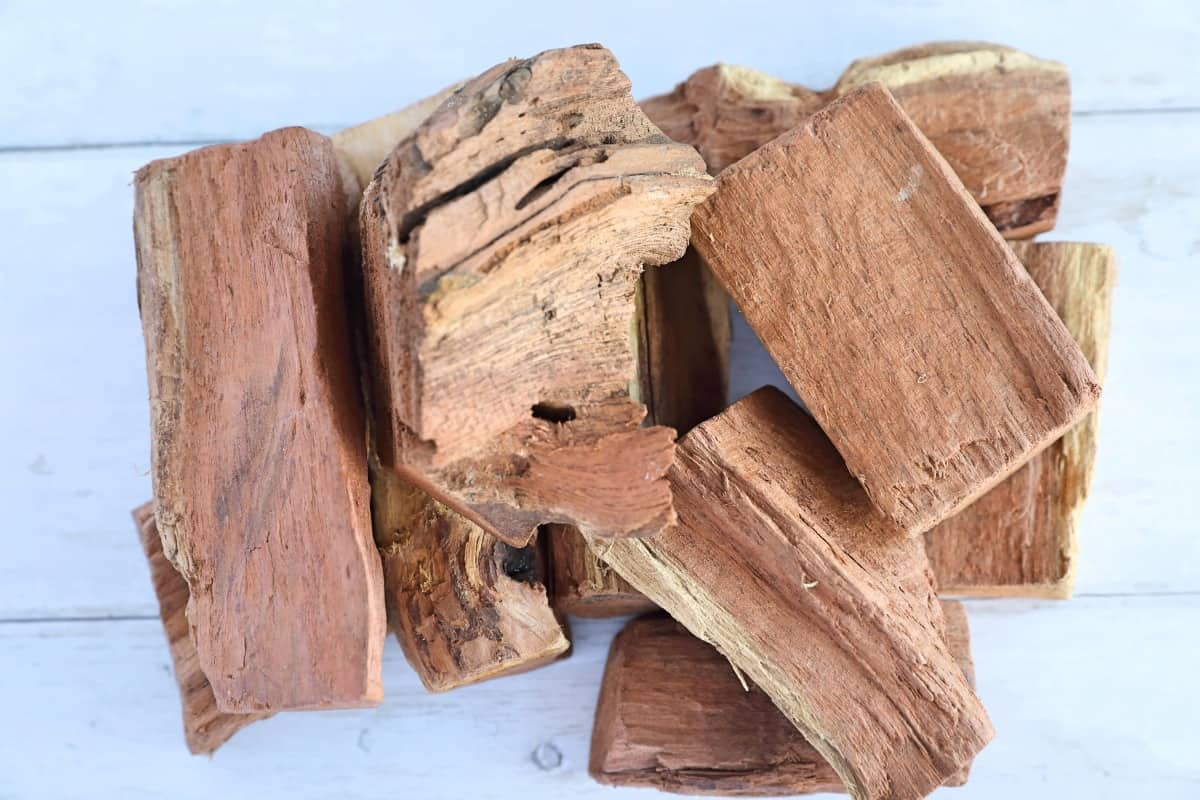
Mesquite is a controversial choice for smoking pulled pork because some chefs think it’s too strong for pork. But, the smoke is delicious, and it pairs well with bold sauces, so if you plan to slather it on, this could work well for you.
Newbies take heed: mesquite smoke can get out of hand in a hurry; reduce the time your meat spends in the smoke or risk having your pulled pork taste like you rescued it from a forest fire.
Truth Be Told, Many Other Woods Work Too!
The woods listed above are some of the best and most popular choices for pulled pork. They’re not the only ones that work, though.
Half the fun of barbecue is getting experimental, seeing what works, what could be better, and just learning what’s out there. If you’re the type who likes to think (and smoke) outside the box, give some of these fruit and nut woods a shot.
- Lemon
- Mulberry
- Nectarine
- Orange
- Peach
- Pear
- Plum
- Walnut
Mix Different Woods to Get the Best of Both Worlds
There’s no rule saying you can only use one kind of wood when you smoke pulled pork. Why not try mixing and matching to develop unique hybrid smoke flavors?
A popular approach is to use a bit of one of the more intense woods like oak, and add in some fruit wood like apple, to sweeten it up. Other popular combinations are oak and cherry, for a strong flavor and fantastic color, or apple and cherry for a milder flavor and fantastic color.
Many barbecue enthusiasts mix hickory with milder woods like oak or apple for a balanced smoke profile, allowing the pork’s flavor to shine without being masked by hickory’s robustness.
Peach wood’s mildness allows for pairing with other woods, creating a complex flavor profile for smoked pork.
Mixing maple with stronger woods like hickory or oak creates a complex flavor profile, blending maple’s subtle sweetness with the robust smokiness of hickory or oak.
By blending woods, you can tailor your smoke intensity and taste to match your sauce, a style of cooking for an entire meal, and even your beverage choices. And it’s just fun to see what you can come up with!
What the Experts Use
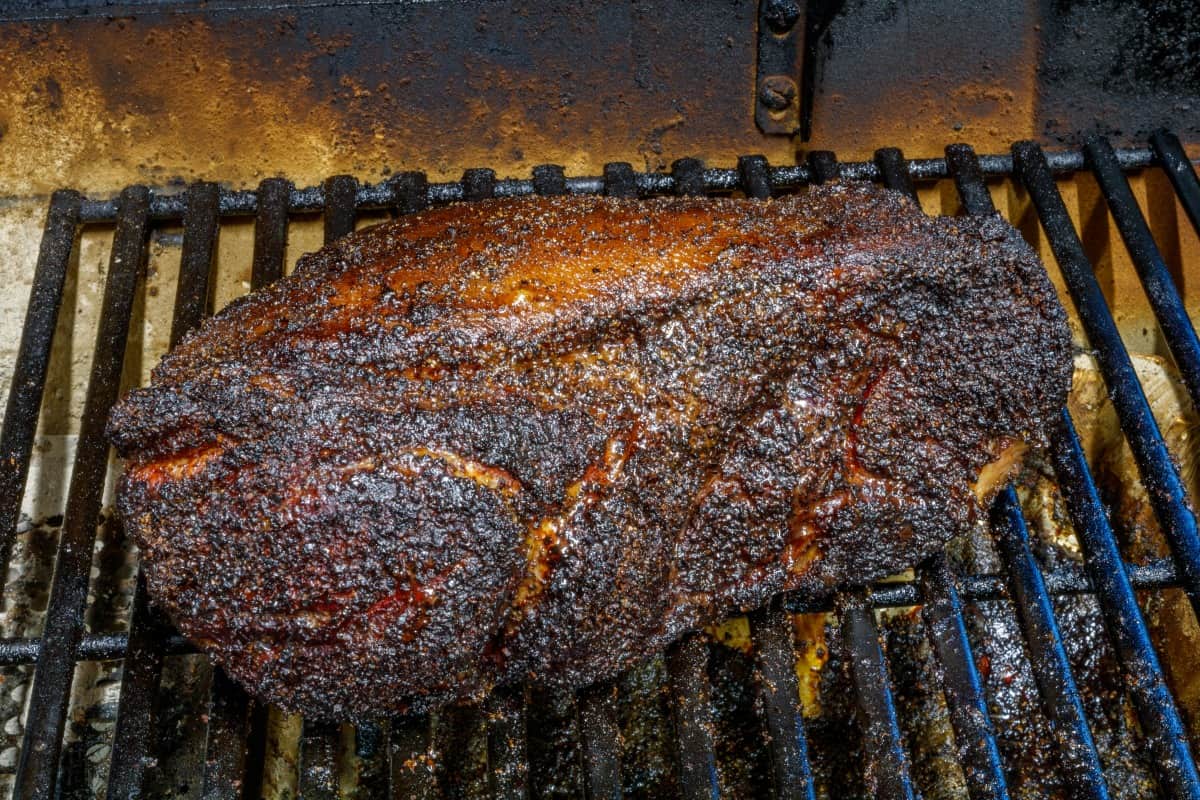
Here’s what some of the best barbecuers in the world have in their fire pits when pulled pork is on the menu.
Steven Raichlen
Well, Steven must be a fan of big smoke because he cites hickory as his chunks of choice for pulled pork, but he’s also partial to fruit woods for pork. A fairly neutral smoke base of hickory allows Steven to build flavor with rubs, sauces, and toppings. If it’s in the Barbecue Bible, it must be the gospel truth.
Malcom Reed
The man behind How to BBQ Right also prefers hickory for pulled pork but adds some cherry to sweeten the mix. The sweetness will lend complexity to the final flavor when mixed with Malcom’s choice of a spicy BBQ rub.
Melissa Cookston
One of the true Queens of BBQ, Melissa chose apple pellets to complement the sweet-with-heat rub she applied to her pork butt before it hit the smoker. The light, fruity taste blends nicely with the sweet brown sugar (like an apple pie!) standard in most rubs.
Myron Mixon
One of the all-time great champions of competition barbecue, tell-it-like-it-is Myron chooses peach wood for his pork shoulder before shredding into tender morsels. The sweetness and mildly smoky taste take a bit of the edge off the spiced-up mop and sauce he favors but won’t mask the delicious sauces with heavy smoke.
Final Thoughts
Sure, you can make a version of pulled pork in a slow-cooker. But, you’ll never replicate the authentic barbecue taste of natural hardwood smoke in a pot. And now that you know which woods are best, it’s just a matter of picking what sounds good to you and stoking up the fire!
Thanks for letting us share our thoughts on the best wood for smoking pulled pork. For more smoking suggestions, browse the site or try the search bar. The more you know, the more fun and delicious food will come your way.


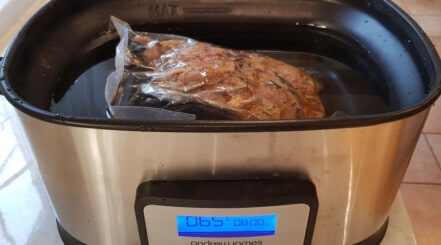
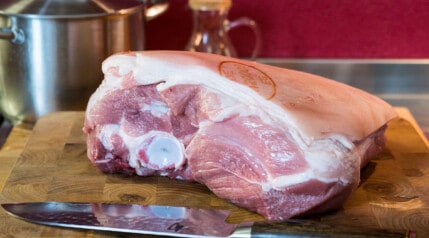
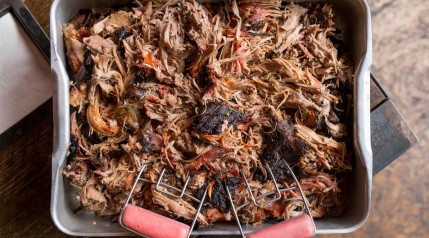

First time smoking a pork butt. I am using your advice to guide me along. I usually do a lot of smoked salmon. Did a turkey this year for the first time. Turned out great. I like to mix up my wood selection. Being from the Pacific Northwest. “Alder” is a popular wood in the smoker. Thanks for sharing you recipe/advice.
Best of luck, Ken. You should do well, as a pork butt is very ‘forgiving’, and great to learn the ropes with. Let us know how you get on?